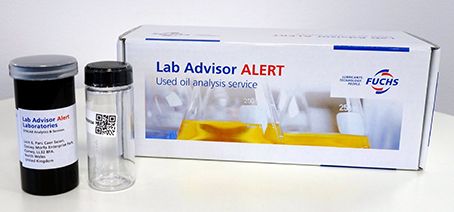Good oil management - a profitable choice!
Keeping a close eye on the oil in your machines and engines is not only a matter of maintenance, but also of profitability. Regular oil analyses can not only ensure that the oil and filtration are working properly, but also detect potential problems before they become serious.

Just as we humans benefit from a health check every now and then, the same is true of the machines and engines we rely on. While checking the condition of oil and systems using oil analysis is becoming more common, I know that there are many more companies who could benefit greatly from analyzing the oil in their systems.
What do you gain from doing oil analyses?
Keeping an eye on the state of your oil can be very profitable, partly because you can better plan maintenance and optimize the oil change interval, thus increasing operational reliability. This in turn can save a lot of money.
An oil analysis can provide invaluable information about the state of a machine or engine. It not only reveals the condition of the oil and verifies that the filters are working properly; it can also indicate if there is any serious wear, what kind of wear it is, and where in the machine it is happening. Oil analyses can even provide an early warning in case there are contaminants in the oil that could cause problems in the future (such as wear, corrosion or jammed valves). Quite simply, an oil analysis leads to a more reliable, more predictable lubrication system.
The importance of continuity
Without a historical record it is very hard, and sometimes impossible, to know what has changed in a system compared to earlier when everything was running smoothly. And without such knowledge, you are essentially fumbling in the dark. So, if oil analysis is important (also for us, who work with oil and help people sort out their problems), continuity is absolutely crucial.
Something that is just as important as continuously analyzing the oil, is to be consistent in the sampling procedure. Is the oil level normal? Has the oil circulated properly? Is the temperature normal for the system? If you take your samples from different places or at different times, you will get different results. And since the advantage of regular oil analyses is to be able to make comparisons over time, you must always follow exactly the same procedure. You should also be aware that it’s extremely easy to contaminate the sample during the sample-taking process.
Find a solution that suits you
While I do realize that an oil analysis might seem expensive, I also know that the costs could be significantly more if something goes wrong in the system. So, my advice to you who ‘only’ want to know how your oil is doing, is to conduct an oil analysis at least once, and ideally twice, a year. If you want to know how your machine is doing, then do an analysis at least twice, and ideally four times, a year. A lot of companies neglect to address these issues, even though the machinery we’re talking about is incredibly expensive.
If your systems are not large enough to make regular oil analyses financially viable, then at least regularly check the oil’s status yourself by looking and smelling – and of course checking all the filters. If you have large systems with many small components, such as individual gears for instance, you can reduce the number of analyses by selecting one unit to analyze regularly. This will give you a general idea of an appropriate drain and change interval for all the units in the system.
To bear in mind when sampling
- Take your oil sample from the same place and in the same way every time. The oil sample should be representative of the system, preferably from the pressure side of a main pipe.
- The oil sample should be at normal operating temperature (if possible).
- The oil level in the system should be normal.
- The sampling point must be clean. Flush out the tap or hose before sampling.
- If you have to use a suction pump: Suck from the middle, never from the bottom of the oil mass.
- Firstly, fill the sampling bottle with oil, and then empty it. Then fill it again and seal it, before sending it off for analysis.
Interested in finding out more about oil anlyses?
Please contact us if you would like to know more about what oil analyses could mean for your process, assistance deciding which units are worth analysing, or to request an oil analysis.

This might also interest you
Ten tips that deliver big time
Store and use your lubricants correctly. You have so much to gain. And to help you, I’ve put together ten great practical tips. The little extra effort will pay for itself many times over, making your lubricant management easier, safer and smarter.

The importance of eliminating contamination sources in food production
What are MOAH and where do MOAH come from? Modern food manufacturers face all kinds of challenges, rules and regulations, both from governments and the market. How can the risk of contamination be eliminated?
All blog posts
Subscribe
Only available in Danish.
Smart Lubrication
Smart Lubrication is a blog from FUCHS where we share our common knowledge about lubricants and lubrication.

